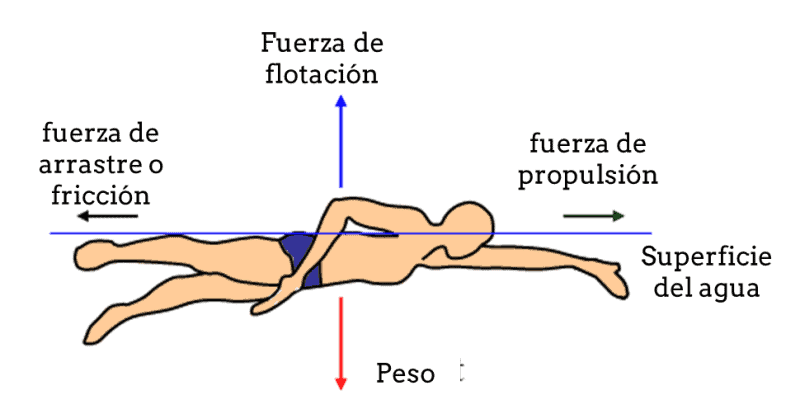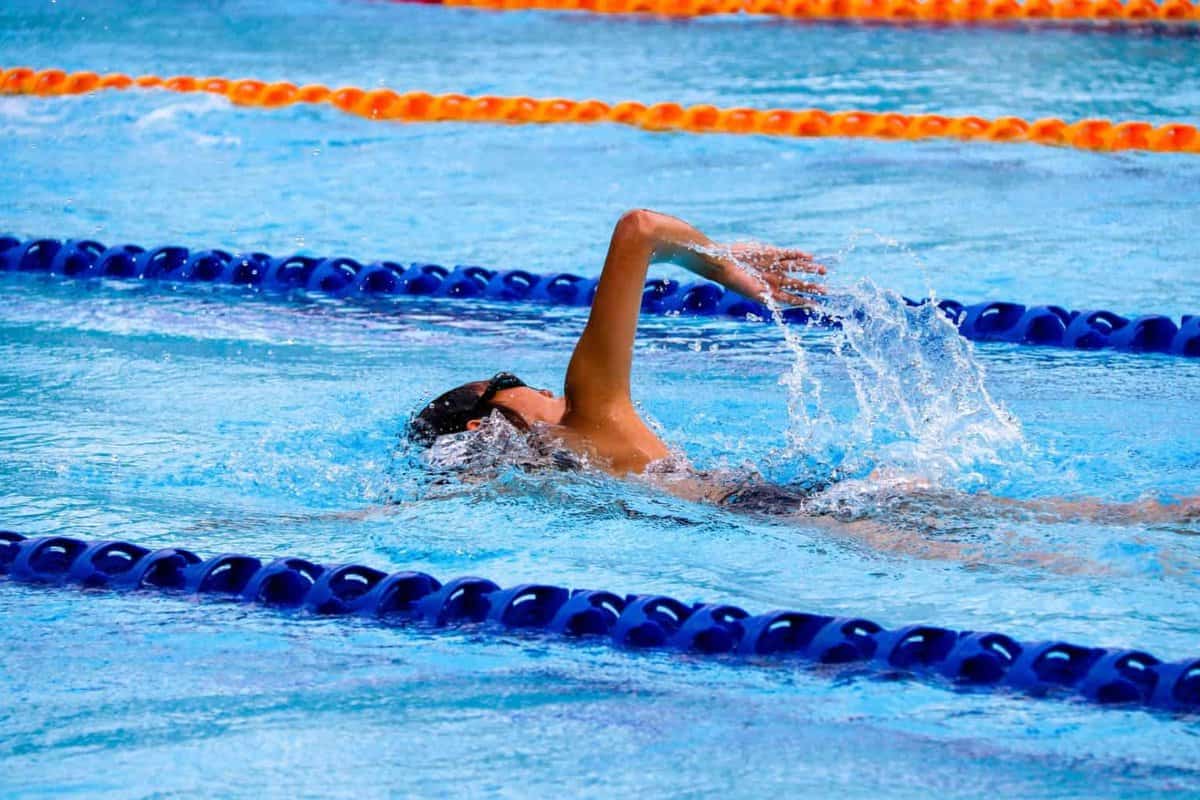In this article, we analyze the freestyle swimming technique. We will look at the freestyle technique step by step.
Flexibility, strength, etc., are important abilities in each sport. However, technique is also important. Therefore, we must take it into account.
In all sports disciplines, technical gestures are important. However, in swimming, great technique is required to improve our performance in the aquatic environment.
The freestyle technique in swimming is fundamental in a style where the greater the perfection of this technique, the better the results.
Importance of a good freestyle swimming technique
Next, we will discuss the benefits that a good freestyle technique in swimming brings us.
It will improve our performance
If there is no correct freestyle technique, physical conditioning does not matter. A well-established freestyle technique allows for better performance and greater effort management while swimming.
Having high technical quality is essential to achieve subsequent results.
Moreover, sports excellence, whether at a high-performance level or an amateur level, will be achieved with confidence and naturally.
It will facilitate injury prevention
Another fundamental factor in establishing the freestyle technique is that it will become a fundamental base that will help prevent injuries in the future and enjoy any type of training or competition much more.
Better hydrodynamics and body control
Having a greater freestyle technique will facilitate greater body control necessary to carry out better training.
When the swimmer masters this body control skill, the athlete will have a higher degree of body and sports intelligence, which will undoubtedly facilitate final performance in the aquatic environment.

What does it mean to have a good freestyle technique in swimming?
Having a good freestyle technique in swimming will allow, as we anticipated before, better movement within the aquatic environment, better propulsion of our body in the water, and greater efficiency overall.
Additionally, an efficient freestyle technique will allow a notable reduction in turbulence generated by the swimmer’s movements in the aquatic environment, which will impact the final performance.
Undoubtedly, fatigue will be reduced, allowing for a greater increase in the athlete’s performance.
Detailed analysis of the freestyle technique in swimming
The freestyle technique can be divided into several phases. Without further delay, we will describe them below.
Arm action in the freestyle technique
The arms have a specific technique that is fundamental when entering and pulling the water. We will now detail each phase of the arm action in the freestyle technique.
Entry
This is the first action performed by the swimmer, aiming to introduce the hand into the water between the shoulder and the midline of the body’s center.
The hand enters beyond the head, with the palm partially turned outward. We must make the entry with the elbow elevated and slightly bent.
To illustrate it graphically, we must know that the first thing to enter the water are the fingers, followed by the wrist, forearm, elbow, and finally the arm.
The palm of our hand should face down and outward for a more ergonomic entry into the aquatic environment.
Catch
This phase begins with the preparation for the pull. Our hand is positioned better to initiate propulsion afterward.
First, the hand enters, then the wrist, and subsequently the arm. The hand should be directed downward, and our elbow should always remain higher than the hand.
Pull
This phase is the most propulsive. During it, we must bend our arm to almost 90º, and the pull is executed backward and directed to our hip opposite that hand.
The maximum bend occurs when the hand is beneath our shoulder.
Our fingers should remain closed with the palm facing backward and the wrist as firm as possible. We must perform a quick and strong pull.
Push
In this phase, the arm begins its extension, and the direction of the hand is outward and upward.
The hand exits the water with the palm directed toward the thigh, and the push is performed beneath the hips.
Recovery
The recovery begins when the hand is inside the water. As a result of the roll, the shoulder should be the first to exit the aquatic environment, followed by the elbow, and finally the forearm and hand.
During recovery, we must keep the elbow up, always above our wrist.
Body position in the freestyle technique
We must maintain a hydrodynamic body position that does not facilitate propulsive movements and reduces resistance forces to advancement.
To do this, it is important that the gaze is directed diagonally slightly forward, breaking the surface of the aquatic environment with our forehead.
Our hips should remain upright, and we must take care of the execution of rolls on our longitudinal axis.
The roll in the freestyle technique
The roll refers to the small rotation on the longitudinal axis performed by the swimmer.
This technical aspect allows us to reduce resistance to advancement, as we have less surface in contact with the water. It also helps us perform the recovery with the elbow up and allows for more efficient traction.
Breathing in the freestyle technique
We must initiate breathing when our hand on the side where the inspiration is performed completes the push.
The inspiration phase should be done through the mouth, and then we will perform a head turn to exhale through the mouth and nose underwater.
Coordination in the freestyle style
It is one of the most important aspects in the freestyle technique.
It consists of coordinating the movement of both arms, coordinating the movement of the arms with breathing, and coordinating the movement of arms and legs with maximum efficiency possible.
Leg action in the freestyle technique
Finally, there is the role of the kick. Fundamental in this style.
The kick starts at the hip, and a whip-like movement should be executed. Our legs should remain closed and together, and we should barely bend the knees.
The leg kick is continuous with up and down movements, and our ankles should remain slightly turned inward. Additionally, an important aspect to note is that the feet should not come out of the water.
Conclusion
As we can see, the freestyle technique is fundamental for the swimmer to present greater performance, prevent injuries, and also maintain greater hydrodynamics in the aquatic environment.
Bibliographic references
- Arellano Colomina, R. (2010). Technical swimming training. Madrid: cultivalibros.
- Alés Reina, M., Ania Palacios, J. M. et al. (2006). Nursing assistant. Madrid: Mad.


